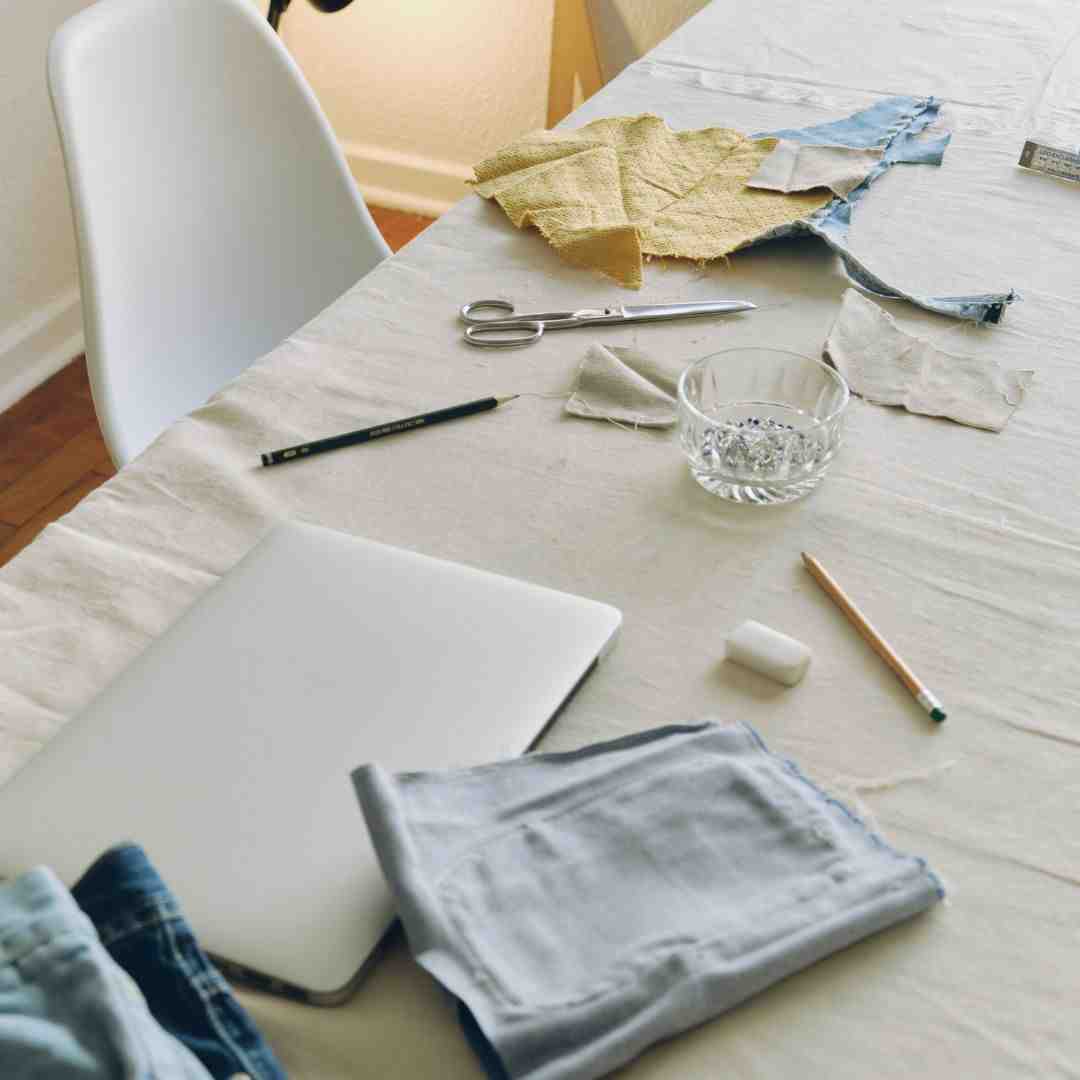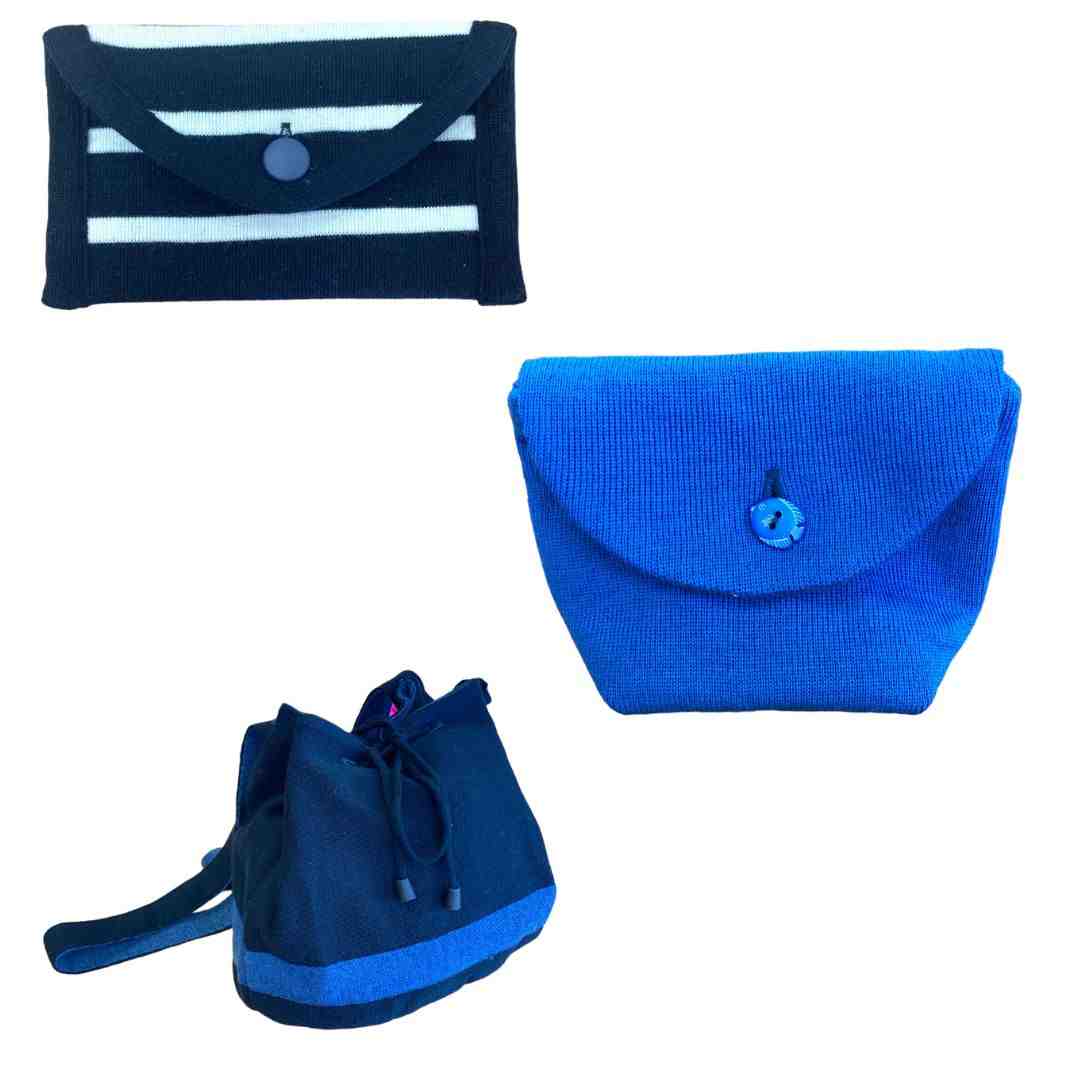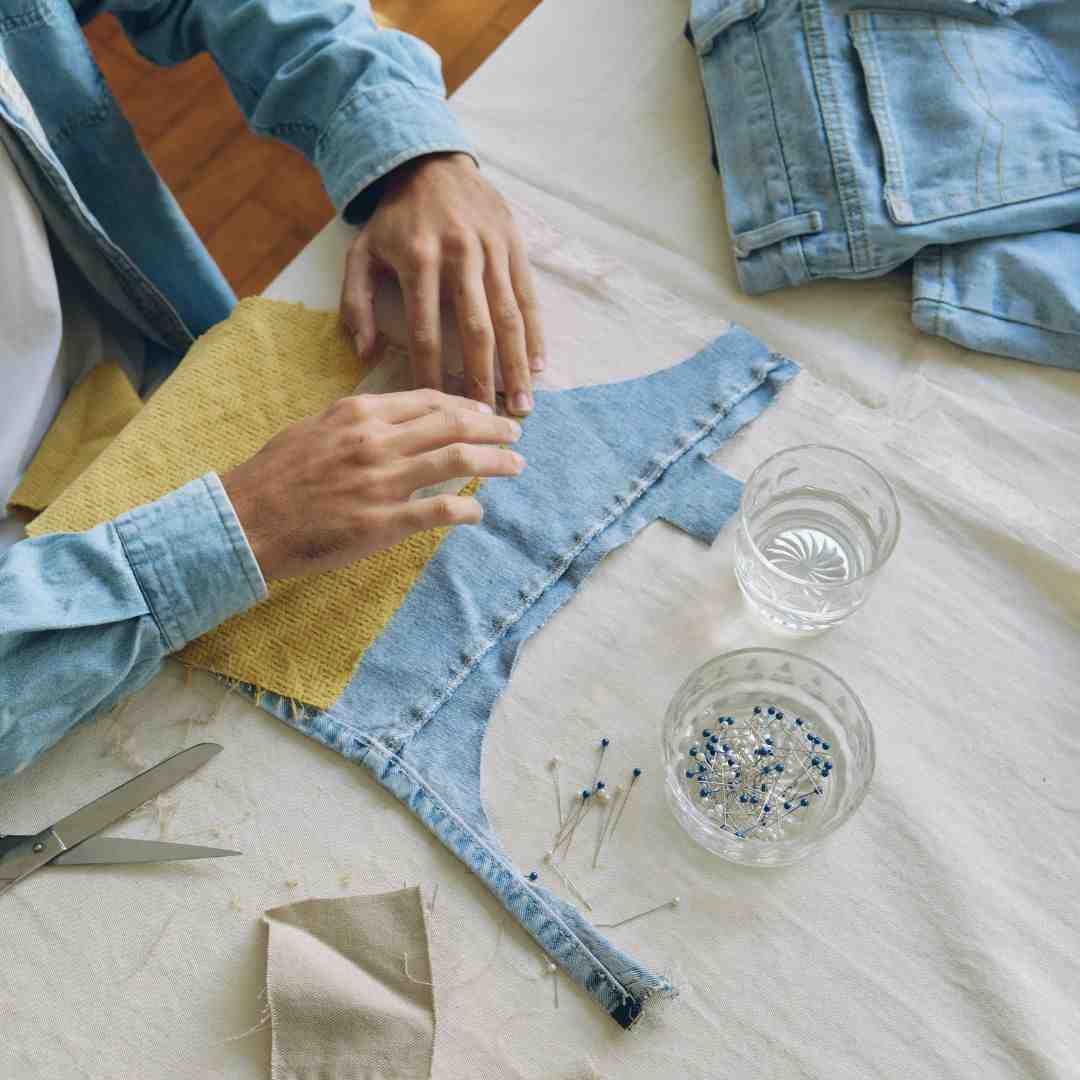What is upcycling?
Upcycling, also called creative reuse or repurposing, is a growing trend in the fashion world. It involves giving objects a second life by transforming them into something new, better or more useful.
Why upcycling is different from recycling
- Recycling is the process of breaking down materials to reuse them to make new products. For example, plastic bottles can be recycled to make new plastic bottles, or newspapers can be recycled to make new paper.
- Upcycling is the process of transforming existing materials into new, better or more useful products. For example, an old pair of jeans can be turned into a handbag, or an old door can be turned into a table.
In general, upcycling is more environmentally friendly than recycling. This is because upcycling reduces the amount of waste that is sent to landfill, and it also saves energy and natural resources.
Here are some examples of upcycling:
- Give new life to objects by customizing or repairing them
- Using recycled or upcycled materials to make new products
- Buy second-hand items
Benefits and challenges of upcycling in fashion
The benefits of upcycling
- Waste Reduction : As mentioned earlier, upcycling helps reduce the amount of waste produced by the fashion industry.
- Energy saving : Creating new textiles requires a lot of energy. Upcycling, by using already existing materials, saves this energy.
- Conservation of natural resources : Upcycling helps reduce the demand for new raw materials, which helps preserve the planet's natural resources.
- Reducing greenhouse gas emissions : The production of new textiles is also a significant source of greenhouse gas emissions. Using recycled materials can reduce the carbon footprint of the fashion industry.
- Creativity and uniqueness : Upcycling encourages creativity and innovation. Each piece of recycled clothing is unique, which adds a special value.
- Social Awareness : Upcycling raises awareness of environmental and social issues related to the fashion industry, including pollution and unfair working conditions.
- Financial savings : For consumers, purchasing recycled clothing can often be more economical than purchasing new clothing.
- Sustainability : Upcycled clothing is often made of high-quality materials and is therefore more sustainable than many mass-produced garments.
- Valorizing local skills : Upcycling can encourage the use of local craftsmanship and skills, thereby supporting local economies.
- Adaptability to trends : By choosing materials and designs, fashion designers can quickly adapt their collections to changing trends, which is more difficult with traditional mass production.

The challenges of upcycling in fashion
- Material Limitations : The raw materials available for upcycling can be limited depending on what is available at any given time. This can sometimes limit the creativity of designers.
- Production costs : Although upcycling can save costs in terms of materials, the process of transforming recycled materials into new products can be costly in terms of time and labor.
- Varying Quality : The quality of reclaimed materials can vary considerably, which can affect the quality of the final product.
- Limited Availability : As each piece is unique, it may be difficult to produce items in large quantities, which may limit availability to consumers.
- Market acceptance : Some consumers may be reluctant to purchase recycled clothing, either because of prejudice against recycled materials or because they prefer the designs and styles offered by major fashion brands.
- Lack of regulation : There are no clearly defined standards or certifications for upcycling, which can make it difficult for consumers to know if a product is truly upcycled.
- Need for specific expertise : The upcycling process requires certain expertise to be able to efficiently transform recycled materials into new quality products.
- Efficiency of upcycling : Upcycling requires more manual labor, which can be more expensive and less efficient than traditional mass production.
- Distribution and logistics : Since upcycling is often done on a small scale, it can be difficult to distribute products to a large audience.
- Consumer education : Many consumers are unaware of the environmental impact of fashion and the importance of upcycling. Therefore, there is a need to increase consumer awareness on these issues.
The History of Upcycling: From Humble Beginnings to Grand Gateways
The origin of the upcycling concept and its evolution
Upcycling, while a hot topic in our environmentally conscious times, is not a new idea. Its practice dates back to times when waste was less common and resources were reused out of necessity. However, its incorporation into fashion is a relatively recent phenomenon, rooted in an increased awareness of the industry’s environmental impacts.
It is difficult to trace the exact origin of the concept of upcycling, as the idea of reusing and transforming materials is as old as civilization itself. In the past, when resources were more limited and the economy was primarily focused on subsistence, reuse was a necessity rather than a choice. For example, glass bottles were often repurposed for storage, old clothes were turned into rags or quilts, and tin cans were transformed into tools or toys. However, with the advent of the industrial age and mass production, this mentality began to change. Consumer society began to value new products and discard old ones, leading to a massive increase in waste.
The impact of Martin Margiela's 1989 fashion show
Martin Margiela is a name that any fashion lover will recognize. Not only for his innovative approach to fashion, but also for his actions that transformed our perception of what fashion could be. The show he held on October 19, 1989 in an abandoned kindergarten with entirely recycled clothing highlighted the reuse of clothing as a central piece of his brand, which helped to shine a light on upcycling. It was not just a fashion event; it was a powerful and impactful message that changed the fashion industry.
By using entirely recycled clothing, he challenged the status quo and showed that beautiful design was not limited to new materials.
Watch the video of this fashion show right here: Margiela Fashion Show 1989
How upcycling gained popularity in the fashion industry
Upcycling has gained popularity in the fashion industry in recent years, due to an awareness of the environmental impacts of the industry. Consumers are becoming more aware of the impact of their consumer choices on the environment. Upcycling is a solution to this problem, as it helps reduce waste and conserve natural resources.
Upcycling is also an economical trend. It allows brands to reduce their production costs by using recycled materials. It also allows brands to offer more affordable products to their customers.
Upcycling is a trend that is set to grow in the coming years as consumers become more aware of the environmental impacts of their consumption choices. Upcycling is a sustainable and cost-effective solution that reduces waste and preserves natural resources.
Upcycling in the heart of Baie des Caps: from sailor sweaters to decorative objects
Since its inception in 1986, Baie des Caps has built a solid reputation as a French manufacturer of high-quality wool sailor sweaters. Our commitment to tradition, authenticity and sustainability is at the heart of everything we do. Based in the Côtes d'Armor, Baie des Caps is proud to offer products made with passion and know-how, reflecting our maritime heritage.

Presentation of Baie des Caps and its commitment to upcycling
In our constant quest for sustainability, we have adopted upcycling as a fundamental element of our production process. For Baie des Caps, upcycling is not just a trend or a way to comply with current environmental standards. It is a reflection of our commitment to responsible production, minimizing waste and valuing resources at their true value.
Indeed, at Baie des Caps, we see each piece of wool not as waste, but as an opportunity. An opportunity to create something new and unique, while respecting our environment. It is in this spirit that we began to transform our wool scraps into pouches and cushions.
How Baie des Caps uses upcycling to give new life to wool scraps
Baie des Caps is proud to have implemented an upcycling process that reflects our commitment to sustainability, creativity and artisanal excellence. Here are the steps we follow to give new life to our wool scraps:
- Collecting wool scraps : The first step is to collect the wool scraps from the manufacture of our sailor sweaters.
- Sorting wool scraps : We carefully sort these pieces according to their color and texture, allowing us to optimally reuse these precious resources in our future upcycling projects.
- Cleaning and preparation : The wool scraps are then cleaned and prepared for processing. This process involves cutting the scraps into small pieces.
- Creation of new fabrics : These pieces of wool are then assembled to create upcycled fabrics, offering a palette of unique textures and colors.
- Crafting : Finally, these fabrics are used to craft a variety of items, from small pouches to cushions. Each piece is designed and handcrafted by our talented artisans, ensuring that each product is unique and of high quality.
You can find our entire upcycled collection right here: Upcycled products Baie des Caps
The effectiveness of upcycling: A concrete case
How upcycling helped reduce CO2 emissions and water consumption in Bangladesh
In Bangladesh, upcycling has become a popular practice in recent years. Indeed, the country is facing an environmental crisis, with high levels of pollution and poverty. Upcycling is a solution that helps combat these problems, by creating jobs, reducing waste and improving the quality of life of the population.
For example, companies recycle plastic bottles to make clothing, handbags and other products. Other companies recycle agricultural waste to make compost, which is used to fertilize soils.
Green Apparel, Eco-Green and Recycled Fashion are companies located in Bangladesh that make clothing from recycled plastic bottles.

Here are some other agricultural waste recycling companies in Bangladesh:
- Compost Bangladesh
- Biogas Bangladesh
- Organic Farming Bangladesh
- Natural Farming Bangladesh
- Sustainable Farming Bangladesh
Upcycling has reduced CO2 emissions and water consumption in Bangladesh. For example, one study showed that recycling plastic bottles reduced CO2 emissions by 20%. Another study showed that composting agricultural waste reduced water consumption by 30%.
Here are some examples of positive impacts of upcycling in Bangladesh:
- Waste Reduction : Upcycling helps reduce the amount of waste that goes to landfill. In 2020, Bangladesh recycled over 1 million tonnes of plastic waste.
- Preservation of natural resources : Upcycling helps preserve natural resources by reusing materials that would have been thrown away. For example, recycling plastic bottles saves oil, which is used to produce new bottles.
- Job Creation : Upcycling creates jobs in the recycling and waste processing sector. In 2020, the recycling sector in Bangladesh created more than 100,000 jobs.
- Improved quality of life : Upcycling improves people’s quality of life by reducing pollution and providing jobs. For example, recycling plastic bottles has reduced air and water pollution in Bangladesh.
Upcycling on a global scale: inspirations and innovations
The upcycling revolution extends far beyond the borders of Bangladesh and France. Around the world, innovative companies are embracing upcycling as a way to reduce their environmental footprint while creating unique, high-quality products.
How other companies around the world are embracing upcycling
- In Colombia, Cyclus transforms used tires into high-end items such as bags and wallets. This process not only eliminates tire waste that would otherwise pollute the environment, but also results in sustainable and trendy fashion products.
- In the United States, clothing brand Patagonia has implemented the "Worn Wear" program, which encourages customers to recycle their worn-out clothing. Used items are repaired, recycled or upcycled into new clothing, reducing the need for new resources.
Inspiring examples of upcycling, from fashion to furniture
Outside of fashion, upcycling is making waves in the furniture sector. In Sweden, IKEA has launched a second-hand furniture resale program in some of its stores, encouraging reuse and reducing waste.
British company Elvis & Kresse reclaims rotting fire hoses and transforms them into luxury fashion accessories like wallets and belts, proving that upcycling is not only eco-friendly, but chic too.
In haute couture, brands such as Hermès have integrated upcycling into their production processes, transforming defective products into decorative objects.
These examples show that upcycling is a global movement, transforming the way we perceive and use “waste” materials. They are a testament to the ingenuity, innovation and endless potential that upcycling brings to various industries around the world.

How everyone can contribute to upcycling and a more sustainable future
Upcycling is not just a trend, it is a movement that contributes to a more sustainable future. Across borders and industries, we have the opportunity to transform the way we perceive and use resources. Every action counts, and it is up to all of us, consumers and producers, to give this movement the necessary momentum.
- Reuse everyday objects : Before throwing away, ask yourself if the object in question could be used for something else. An old t-shirt can become a cleaning cloth, a tin can can be used as a pencil holder, etc.
- Give a second life to used clothes : Rather than throwing away clothes you no longer wear, why not try transforming them into something new? An old sweater could become a scarf, worn-out pants could be transformed into a handbag, etc.
- Opt for upcycled items when shopping : More and more companies are offering products from upcycling. By choosing them, you encourage this practice and support a circular economy.
- Learn the basics of upcycling : There are plenty of tutorials online that can help you get started with upcycling. Learning to sew, craft, or paint can help you give new life to your items.
- Support companies that practice upcycling : Like Baie des Caps, more and more companies are getting involved in upcycling. By choosing them, you support their efforts to reduce waste and promote a circular economy.














